- The dual-motor all-wheel-drive version of the Ariya adds plenty of pep and improved stability in wet conditions.
- Overall comfort and quiet are impressive.
- The Ariya looks and feels futuristic, but its multimedia system is a blast from the past.
Driven: 2023 Nissan Ariya e-4orce Has the Right Ingredients, But the Result is Undercooked
The Ariya is close to being great, but some strange technology choices and a high price tag hold it back
A tasty plate of food requires the congruence of two things: excellent ingredients and proper cooking. If either of those go amiss, a dish won't taste as good as it could (or should). The 2023 Nissan Ariya e-4orce — Nissan's name for the Ariya's all-wheel-drive variant — has all of the ingredients to be a great electric SUV: futuristic style, advanced safety features, big screens and a strong powertrain. But some curious choices along the way leave a strange taste in your mouth, as we discovered after piloting this AWD Ariya through the rolling hills of Napa, California.
Double the motors, double the fun
This is our second go-round in the Ariya. We tested the single-motor version of the SUV a few months ago but now it's time to see how the dual-motor all-wheel-drive version, the one Nissan expects to sell more of, gets on. Doubling the motors leads to a big bump in power — increasing from 214 hp to 335 hp with the base 63-kWh battery pack, or from 238 hp to 389 hp with the larger 87-kWh pack. Most Ariyas with AWD come with the larger battery pack, aside from the base Engage trim, and it's the way to go. Not only do you get more power but estimated range increases as well, from an estimated 205 miles to 272 miles in the Engage+ and Evolve+, or 267 miles in the Platinum+ trim that we tested. Those are numbers we'll have to put to the test when we get an Ariya in for evaluation and drive it on our EV test route.
Am I Ready for an EV?
- EV ownership works best if you can charge at home (240V outlet)
- Adding a home charging system is estimated to cost $1,616 in
- Edmunds is partnering with Treehouse, an independent provider of home EV installation services. Learn more about the installation services partnership
With the added power, the Ariya gets up to highway speeds with great ease. The single-motor version isn't slow by any means, but it takes a few seconds to really get going. No such problems with e-4orce, Nissan's punny name for its electric all-wheel-drive system. The Ariya doesn't have head-snapping acceleration like some other EVs, but Nissan says this was intentional to make the buildup of speed feel more natural.
Unlike some other electric AWD systems, e-4orce doesn't include a rear differential. When a wheel loses traction or the system begins to notice understeer, it uses the Ariya's brakes to get things pointed back in the right direction. Nissan set up a small course for us to test the AWD system, and even though it was already raining, the pavement was further soaked by a water truck. I entered the hairpin and was told to bury the throttle, fully expecting something bad to happen. But right as understeer began creeping in and the nose started to push, the system braked the rear inside wheel nearly immediately and kept the Ariya in line. These brake-based systems sometimes have a lag associated with them, but it intervened quickly and safely in this case. The system seems to be well tuned, and on a very rainy day, the Ariya drove on the highway and curvy mountain roads alike with confidence.
Half-baked one-pedal driving
The Ariya's brake blend is well calibrated, with the transition between regenerative and physical braking occurring seamlessly. Nissan has also included an "eStep" mode, activated by a small button on the center console. This is meant to function like a one-pedal drive mode except for one key detail: It won't actually bring the vehicle to a complete stop.
This is the first in a series of strange choices Nissan made with the Ariya that make you tilt your head to the side when you encounter them. When approaching a stoplight or a stop sign, you let off the throttle and the Ariya slows down pretty quickly — exactly like you'd expect of a one-pedal drive mode. But once you get down to a crawl … it just keeps on crawling. You'll have to tap the brakes to stop fully. So 95% of the time it feels just like one-pedal driving, until you have to stop. Nissan says that this choice was based on customer feedback, but I'd like to meet the customers who enjoy eating a whole taco except for the last bite at the end.
Soft-boiled technology
The Ariya's interior meets all the requirements of a modern EV, with twin 12.3-inch screens stacked side by side and haptic controls integrated into the dashboard and the center console. Usually I'm not a fan of these controls, but they are at least illuminated so they can be found at night and offer haptic feedback to let you know they've been activated. The steering wheel controls are a mix of touch and physical controls, in some cases combining several functions onto a single large button. Different functions are accessed by pressing a different portion of the button. It sounds confusing, but I found that it worked quite intuitively from behind the wheel. The dashboard is overlaid with soft-touch materials and incorporates a handy hidden storage bin beneath the screen in lieu of center console storage, of which there's practically nil. Overall it's a stylish, forward-looking cabin.
But when you dig just below the surface, cracks start to show. The infotainment system feels dated, especially the navigation, and sorting through menus to find what you need is a chore. There are some weird choices in how information is displayed as well. For instance, the head-up display ties in nicely to the blind-spot warning system to show when a vehicle is approaching on either side, but for some reason that functionality only works when the adaptive cruise is activated. It'd be nice to have those shown all the time, especially when you're driving in the city.
Fried charging speeds
The Ariya is the first U.S.-bound Nissan vehicle to ride on the automaker's new CMF-EV platform. Considering that it's the latest and greatest thing in Nissan's world, it's strange to see that peak charging speeds are slower than the competition. It can only charge at a maximum of 130 kW, which will fill the battery from 10% to 80% in about 40 minutes. Compare this to the Hyundai Ioniq 5 and Kia EV6, which debuted a couple years ago and can charge at up to 350 kW, bringing them from 10% to 80% battery capacity in 18 minutes. Nissan's counterargument is that the Ariya is capable of higher charging capacity when the battery is above 80% than competitors. But given that it's generally recommended to only charge to 80% for everyday driving in order to preserve battery life, this won't matter to most drivers. The fact remains that its quick-charging capabilities are slower than every other compact SUV EV for sale today.
I asked Nissan representatives if the platform could handle higher charging speeds and they confirmed that it could, and we would be seeing that on future vehicles. But it remains a curious omission to not include this upgraded hardware for the Ariya, which is supposed to be Nissan's new electric flagship. It's a missed opportunity for Nissan to further differentiate the Ariya and give it parity with faster-charging competitors.
Overcooked price
The Ariya's mix of good ideas and varying grades of execution net out somewhere in the middle. It's a class-competitive SUV when you measure it against the segment, meriting consideration against the likes of the Volkswagen ID.4, Tesla Model Y, Ford Mustang Mach-E and the aforementioned Ioniq 5/EV6 duo. We're excited to see how the Ariya performs on our range test when we get one in for full testing.
What may end up making the Ariya a tough sell is its price tag. In specification and size its closest competitor is the ID.4. The Ariya makes more power but their range figures are close. And the problem is that the Volkswagen is significantly cheaper. The Ariya Platinum+ I tested on this first drive came in at $62,770 (including destination charges), while the ID.4 tops out around $56,000. And with production shifting to Tennessee for this year, the ID.4 comes along with a full federal tax credit — as do the Tesla Model Y and the Ford Mustang Mach-E. That extra cash on the hood gives those three vehicles a head start on the Nissan (and the Hyundai and Kia for that matter), and as much as I enjoyed aspects of the Nissan, it's a tough sell.
Edmunds says
The Ariya is a giant step forward for Nissan's EV effort, which until now was led by the budget-friendly but less practical Leaf hatchback. But a few quirky missteps make the Ariya less polished than competitors and its high price tag may have shoppers looking elsewhere.
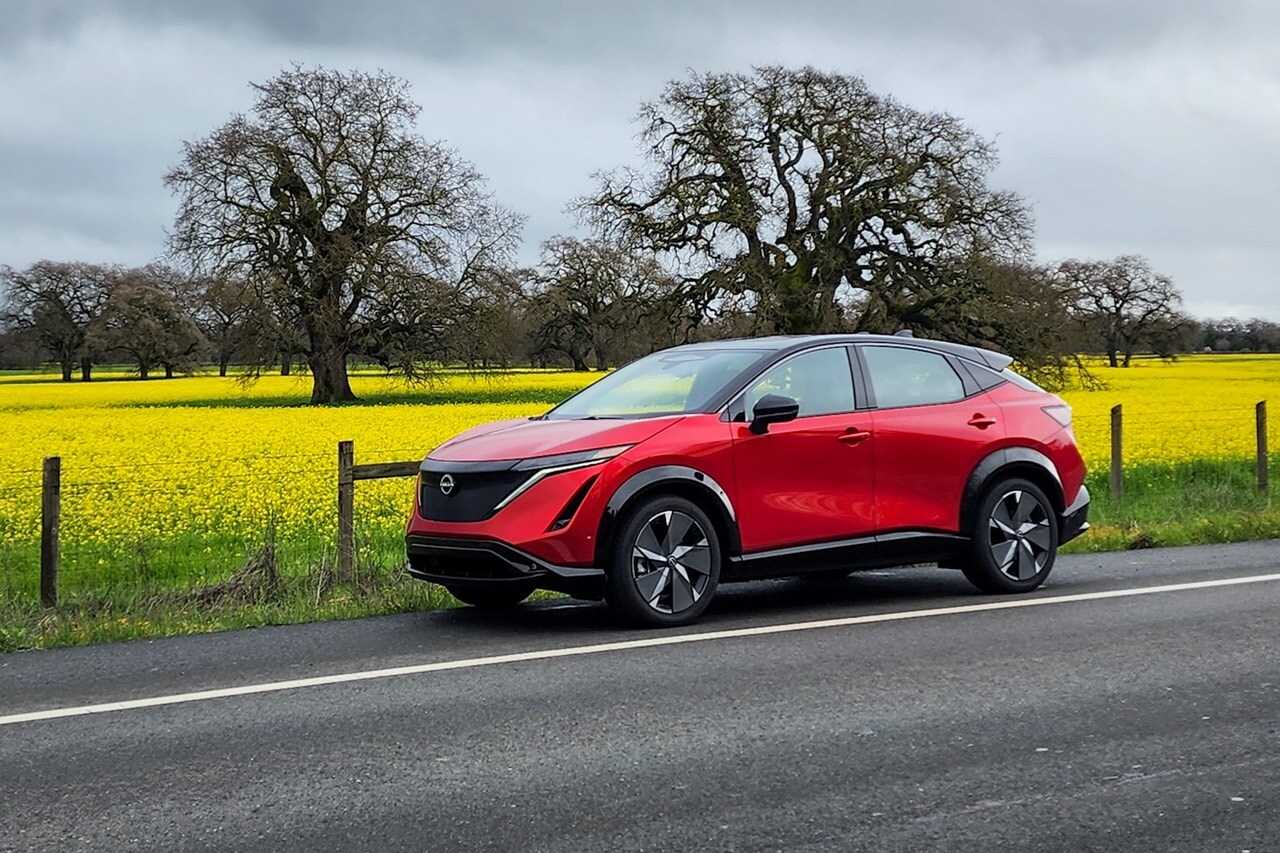
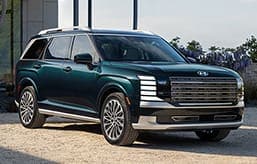
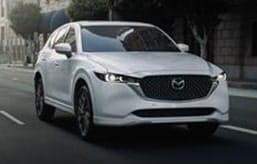

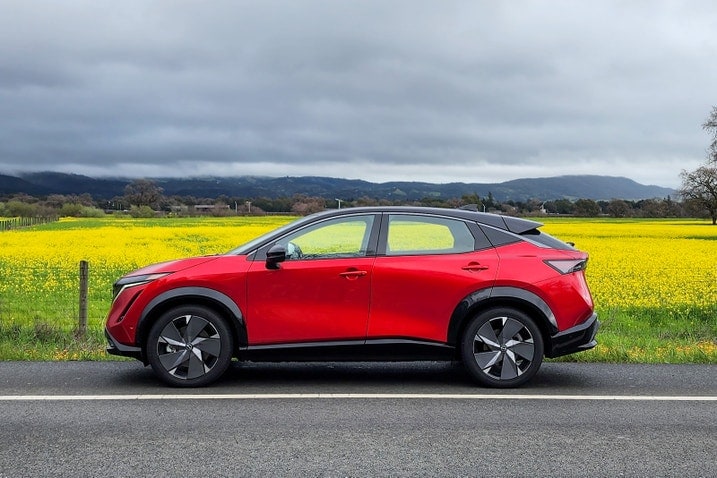
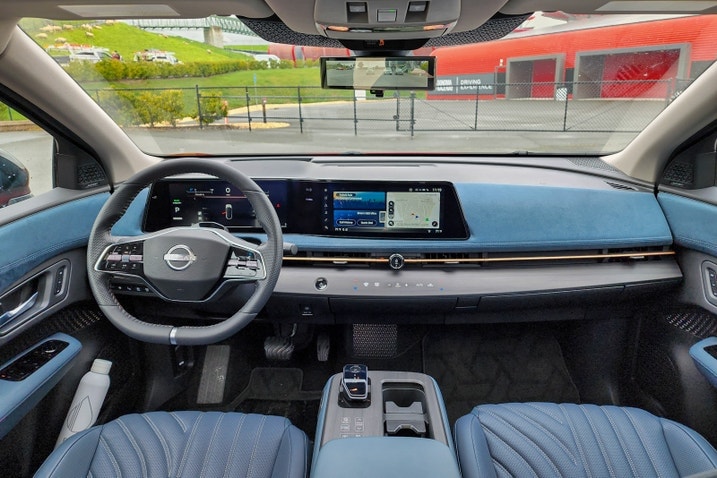
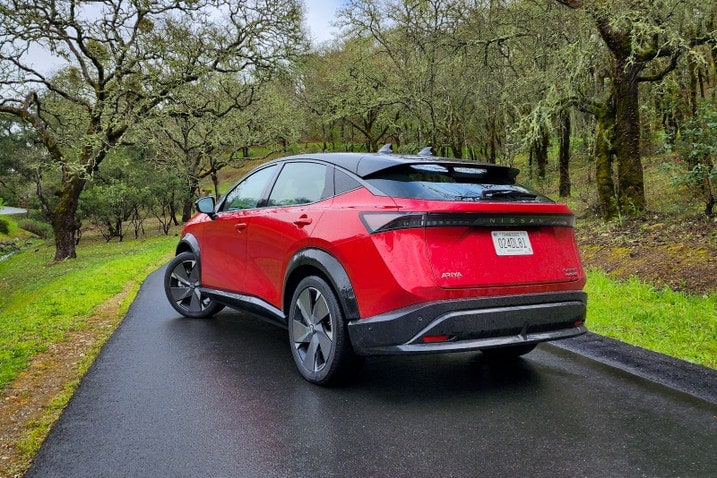
 by
by